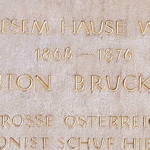
Anton Bruckner, composer and accomplished (to say the least) organist entered this world in Upper Austria in 1824, but moved to Vienna permanently in the late 1860s. He remained a resident here until his death in 1896.
This guide takes you through some of the locations of most importance to his domestic and musical life in the city.
- See also:
Bruckner: his life
The National Library has a special Bruckner exhibition running until January 26th, 2025. The displays include autographs of all nine symphonies(!) For more permanent landmarks…
Homes and plaques
Commemorative plaques mark Bruckner’s three notable residences in Vienna. But first…
Hotel Kaiserin Elisabeth
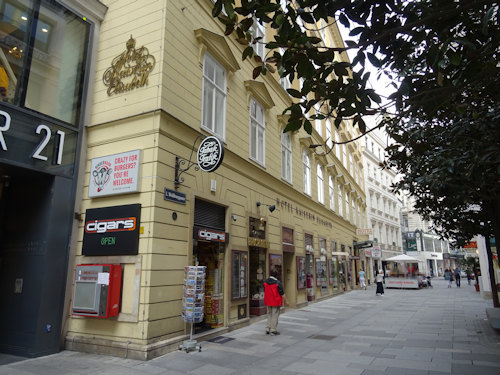
(Tip: just opposite is the wonderful café, Conditorei Sluka)
Not quite a residence as such, but the engraved list of famous guests at Hotel Kaiserin Elisabeth at Weihburggasse 3 (one of Vienna’s most central hotels) marks Bruckner as having stayed there in 1863. Apparently, Richard Wagner did the same a year earlier.
Währingerstraße 41
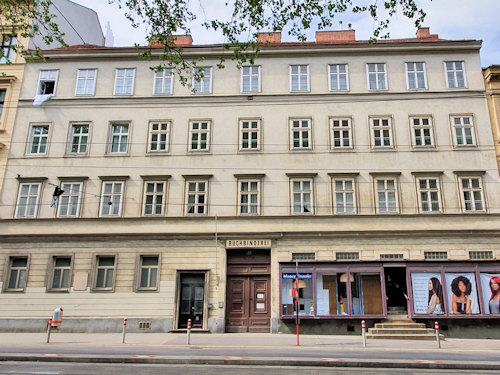
(The sign above the door means bookbinder)
The composer lived on this street in Vienna’s 9th district between 1868 and 1876. The plaque (on the left side of the building as you face it) states that he wrote his 2nd to 5th symphonies during that time.
Incidentally, a brisk ten-minute walk further into the 9th district takes you to Franz Schubert’s birthplace. (To be fair, walk ten minutes in any direction in Vienna and you have a good chance of coming across somewhere with a musical connection.)
Heßgasse

(“Dedicated to an honorary member by the Vienna Schubertbund”)
This former residence is at the edge of Vienna’s city centre. The plaque gives the date of Bruckner’s stay (1877 to 1895), suggesting this was the period when he wrote his most important pieces.
Klosterneuburg
Not a residence as such. Or even in Vienna. But…the town of Klosterneuburg is right on the border to Vienna and Bruckner apparently had strong connections there. The town has a street named after him (Anton Bruckner-Gasse).
Unsurprisingly, he could be found playing the organ in the church of Klosterneuburg Abbey: a lovely Baroque location worth a visit in its own right.

A plaque (see photo above) at No.11 on Rathausplatz square close to the abbey describes how Bruckner…
…spent many happy hours in this house
Apparently, Bruckner would play piano for the family, who owned the transport service that took him between Vienna and Klosterneuburg.
Belvedere

(An unexpected surprise at the 18th-century palace)
Bruckner spent his final months in an apartment on the grounds of Belvedere, right next to the Baroque Upper Palace. To find it, look for the “outbuilding” outside the southeast corner of that palace.
The plaque notes that Bruckner died here on October 11th, 1896. A wreath with a tribute in English hung below on my visit.
Bruckner’s funeral
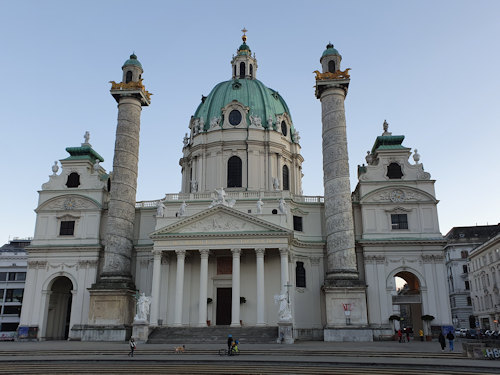
(The Karlskirche church)
Shortly after his death, a funeral procession took Bruckner’s coffin to Karlskirche church for a service on October 14th attended by the great and good of the city, including Johannes Brahms.
A plaque just inside the side entrance to the church commemorates the occasion. It’s before the ticket counter so you can see it without paying to go inside.
They then transferred the coffin to St. Florian in the province of Upper Austria for burial directly below the organ in the crypt of the church of the local monastery.
Bruckner: his music
Musikverein
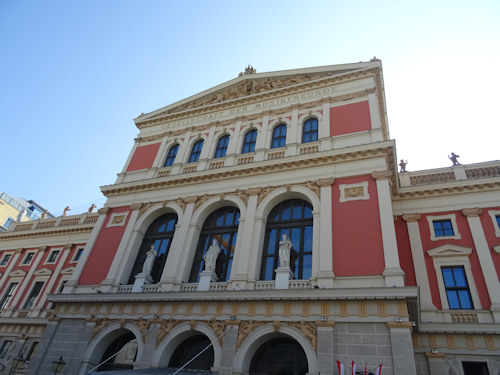
(The front façade of this famous concert venue)
Inevitably, the Musikverein building has a strong Bruckner connection: he performed at the 1872 presentation of the new organ in the main concert hall, for example, and taught at the Musikverein’s own conservatorium (now the University of Music and Performing Arts Vienna).
Various Bruckner works enjoyed their world premiere at this prestigious venue.
Bruckner himself conducted the infamous first performance of his third symphony on December 16th 1877. (Apparently, most people had already left the concert hall by the end.)
Piaristenkirche
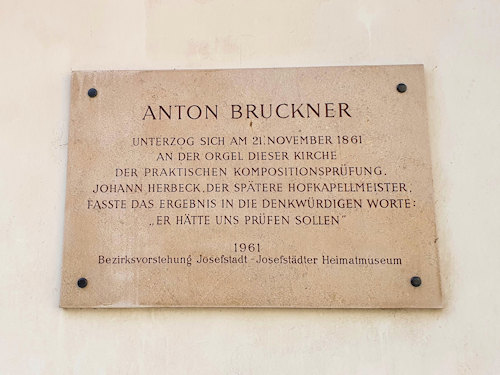
(The same location also hosted a Haydn premiere)
The rather nice plaque at the Piaristenkirche church explains that Bruckner took the practical part of his music composition exam there in November, 1861.
As the inscription notes, the occasion led Johann Herbeck to proclaim that:
He should have been examining us
Bruckner played the church organ there again in later performances.
Augustinerkirche
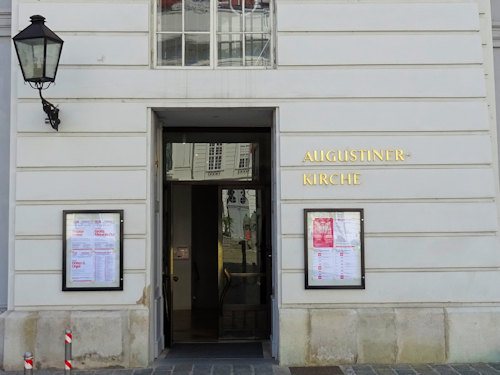
(The unassuming church entrance)
Bruckner played organ regularly at the Augustinerkirche (the court church on Josefsplatz) in the 1870s and 1880s. His Mass No. 3 in F minor premiered there, for example, on June 16, 1872. The Gemeinde Zeitung paper commented (my quick translation):
The work as a whole made a big impression, despite the occasional bizarre effect, and testifies to a not insignificant compositional talent.
Well, quite.
Stephansdom
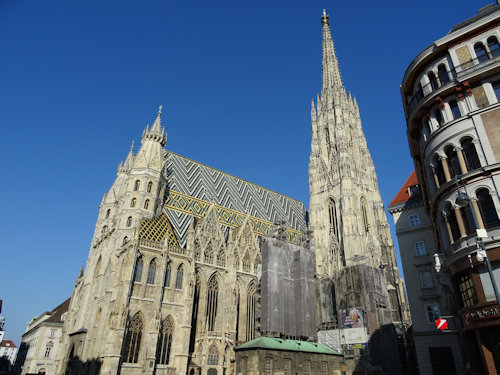
(The mosaic roof appeared post-WWII)
October 6th, 1886 saw Bruckner perform at the inaugural concert for Stephansdom cathedral’s new organ (which a 1945 fire subsequently destroyed, unfortunately).
Bruckner: memorials & more
Stadtpark monument
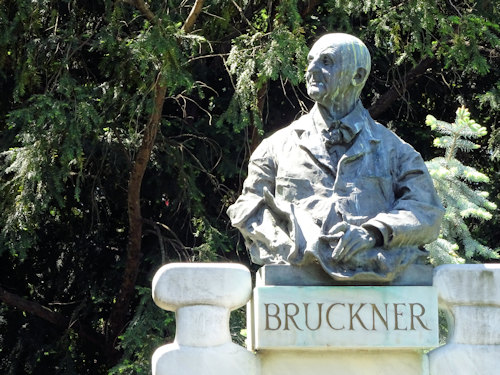
(The Tilgner bust)
The meadows of the Stadtpark pay tribute to various composers, not least Schubert and Johann Strauss II, with monuments and memorials.
The small Bruckner monument has the original bust (I think) by Viktor Tilgner from 1899, but the base is actually a late 1980s toned-down version of the more decorative 1899 design by Fritz Zerritsch.
The original base featured the muse of music, but suffered too often at the hand of vandals:

(Postcard showing the original monument, printed around 1899 and produced by Deutsch’s Postkartenverlag; Wien Museum Inv.-Nr. 183185; excerpt reproduced with permission under the terms of the CC0 licence)
Brucknerstraße
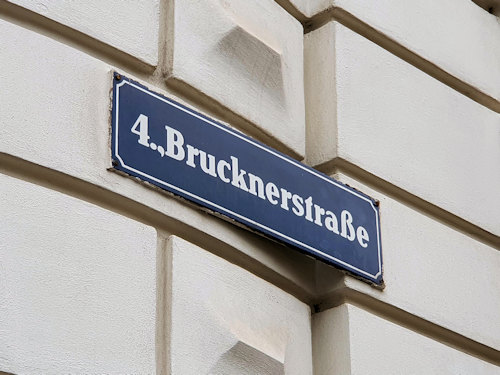
(Unsurprisingly, not the only Viennese street named after a composer)
The short street named in Bruckner’s honour lies close to the Musikverein concert venue (see above) and includes the French embassy with its rather distinctive Art Nouveau architecture.
Bruckner star

(Appropriately located outside Vienna’s main classical concert venue)
Bruckner qualifies for a star outside the Musikverein building.
Church organ
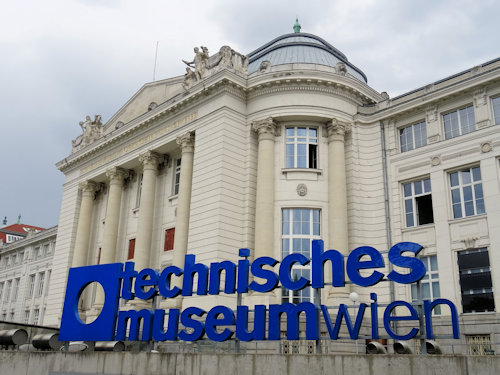
(An unexpected location for a Bruckner organ)
A monument of sorts.
Bruckner would have used the 1862 organ built by Carl Friedrich Ferdinand Buckow for the Augustinerkirche (see above). The Technisches Museum normally features the instrument in their music display.
Bruckner location map
Find all the places mentioned in this article on the map below. As time passes, I may add more (particularly as I come across other places Bruckner performed at).